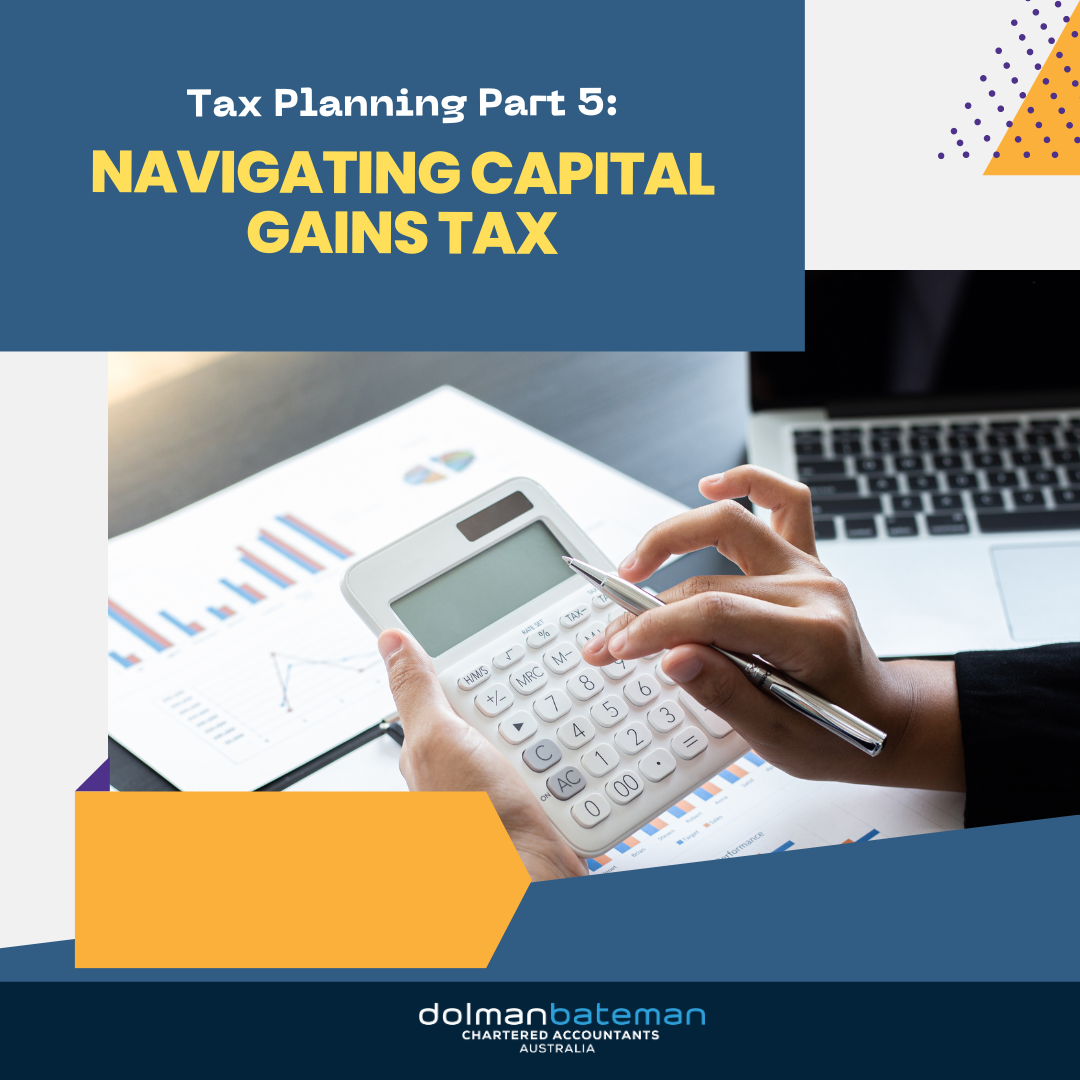Tax Planning Part 5: Navigating Capital Gains Tax
- Arnold Shields

- Jun 7, 2024
- 3 min read
Updated: May 13

Capital Gains Tax (CGT) can be one of the most significant taxes you'll face when selling property, shares, or business assets. It’s essential to understand what triggers CGT, how it's calculated, and the best ways to minimise your liability. This is Part 5 of our Tax Planning Series, designed to give you clear, actionable guidance.
What Triggers Capital Gains Tax?
A capital gain arises when you sell an asset for more than you paid for it. In Australia, CGT is triggered by specific disposal events, including:
Selling Property: Investment properties are subject to CGT. Your main residence may be exempt in most cases.
Selling Shares or Managed Funds: Any profit made from selling shares, ETFs, or units in managed funds is subject to CGT.
Selling a Business or Business Assets: The sale of a business or its capital assets (such as goodwill or equipment) can attract CGT.
Other Events: Gifting assets, selling cryptocurrency, or receiving assets through certain trust arrangements may also trigger CGT.
Note: CGT rules may differ in cases of death, divorce, or restructuring, and certain rollovers or exemptions may apply.
How to Calculate Capital Gains Tax
To calculate your capital gain or loss:
1. Determine the Cost BaseThis includes the purchase price plus associated costs such as:
Legal fees
Stamp duty
Improvement costs
Selling costs (e.g., agent commissions)
2. Calculate the Capital GainSubtract the cost base from the sale price:Sale Price − Cost Base = Capital Gain (or Loss)
3. Apply CGT DiscountsIf you’ve held the asset for more than 12 months, you may be eligible for a discount:
Individuals and Trusts: 50% discount
Super Funds: 33.3% discount
Companies: No CGT discount
Example:
Purchased investment property: $300,000
Legal fees & improvements: $20,000
Total Cost Base: $320,000
Sold for: $500,000
Capital Gain: $180,000
Discount (50%): $90,000
Taxable Gain: $90,000
Strategies to Minimise Capital Gains Tax
1. Use CGT Exemptions
Your main residence may be fully exempt.
Personal use items like cars and household goods are exempt if under the cost threshold.
Business assets may qualify for small business CGT concessions.
2. Offset Gains with Losses
You can use capital losses to offset capital gains. If your losses exceed gains, carry them forward to future years.
3. Time the Sale
Sell in a low-income year or stagger asset disposals across multiple years to stay in lower tax brackets.
4. Make Super Contributions
Contributing to superannuation may reduce your taxable income, indirectly lowering your CGT.
5. Use Strategic Ownership Structures
Family trusts and other structures can allow income splitting and strategic allocation of capital gains.
Talk to a CGT Specialist
Capital Gains Tax can be complex, and mistakes can be costly. Our tax specialists at Dolman Bateman can help you develop a tailored CGT minimisation strategy and ensure full compliance with the ATO.
Call us today on (02) 9411 5422 or book a confidential consultation below.
Disclaimer:
The information provided in this article is general in nature and does not constitute personal financial, legal or tax advice. While every effort has been made to ensure the accuracy of this content at the time of publication, tax laws and regulations may change, and individual circumstances vary. Dolman Bateman accepts no responsibility or liability for any loss or damage incurred as a result of acting on or relying upon any of the information contained herein. You should seek professional advice tailored to your specific situation before making any financial or tax decision.


